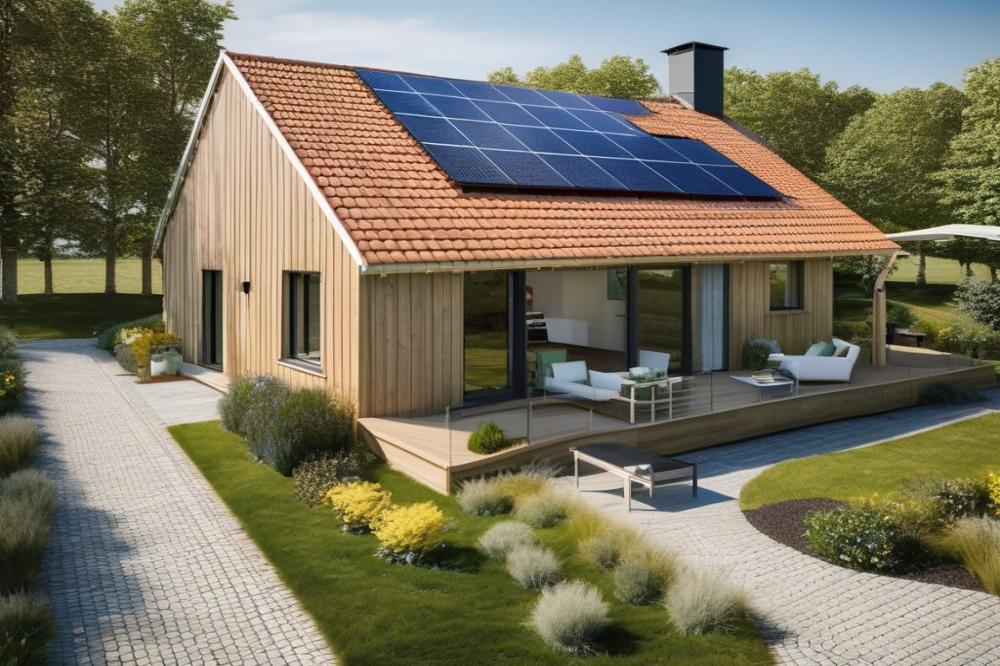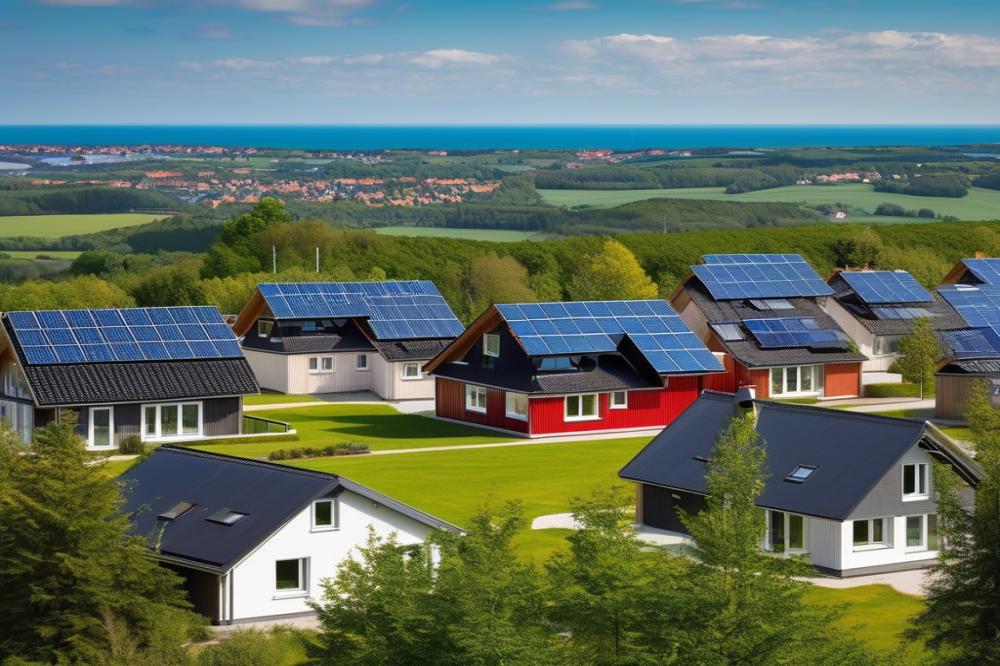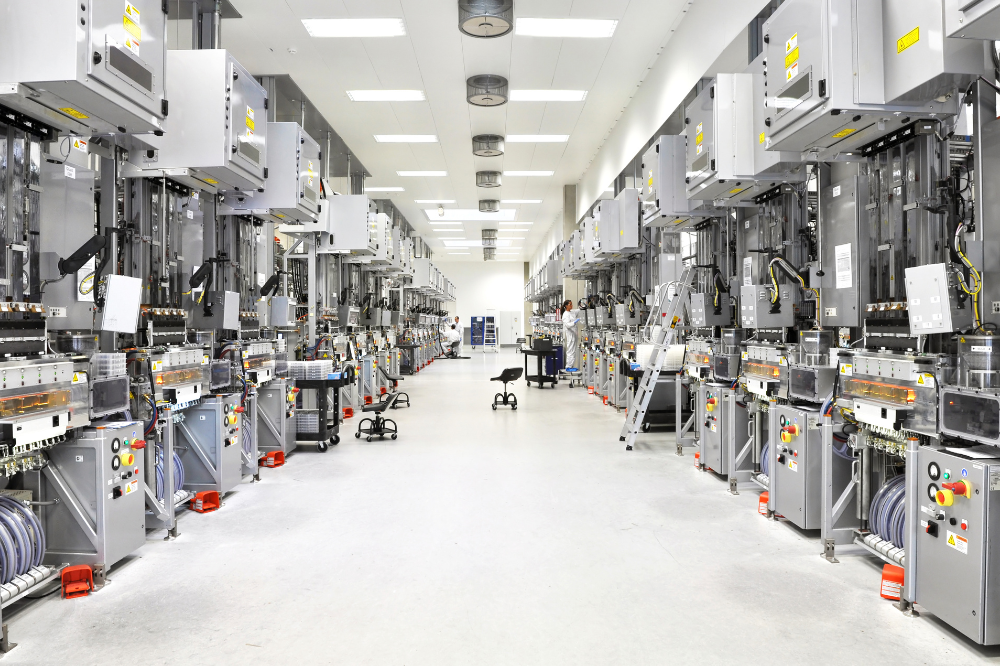Introduction
Renewable energy is becoming a major player in our world. It helps protect our environment while providing power. As awareness grows, many are looking to sustainable solutions. Denmark is at the forefront of this movement, particularly in solar energy. The country takes full advantage of its clean energy resources, making significant strides in solar technology.
The landscape of solar energy in Denmark has transformed dramatically over the years. Home solar systems are now common sights on rooftops from cities to rural areas. Residents have embraced solar panels not just for their eco-friendliness but for their potential to cut costs. With an increase in electricity savings, many find the switch appealing. Programs like feed-in tariffs support homeowners who generate their own power. These incentives make it clear that the future is bright for renewable energy.
One important aspect that often gets overlooked is the management of surplus solar electricity. During sunny days, homes can produce more energy than they can use. This excess can be a profitable resource if homeowners learn how to harness it properly. By understanding grid connection and energy storage options, Danish homeowners can truly benefit. Not only does this approach support sustainable living, but it also leads to increased energy efficiency. Embracing these practices can turn surplus energy into cash while promoting green energy use.
Understanding surplus solar electricity

Surplus solar electricity refers to the energy generated by solar panels that goes beyond what a household needs. When you use home solar systems, they turn sunlight into usable electricity. On sunny days, it’s possible to produce more energy than required. This extra energy can lead to significant electricity savings.
Solar panels work by capturing sunlight and converting it into electricity. The technology they use allows homeowners to generate power during daylight hours. When production exceeds usage, that excess energy is created. Many homeowners may not realize this can happen often in Denmark, where sunlight can be plentiful during certain seasons.
The grid connection plays a crucial role in managing extra energy generated. If a home is connected to the electricity grid, it can send surplus energy back to the network. In return for this contribution, some homeowners benefit from a feed-in tariff. This incentive allows them to earn money for the extra electricity they provide. Another option is energy storage, which can hold excess power for use when the sun isn’t shining.
Integrating sustainable living with renewable energy is becoming increasingly popular. Homeowners can optimize energy efficiency by using the electricity they produce. Having a battery system means you can take full advantage of sunshine even at night. As a result, the potential to profit from solar becomes clear. Making use of this surplus is a smart way to contribute to an eco-friendly environment.
Selling Surplus Solar Electricity

Many Danish homeowners have taken a step towards sustainable living by installing solar panels on their roofs. This not only helps in reducing their energy bills but also opens up a way to sell excess electricity back to the grid. Selling this power can be a rewarding experience, both financially and environmentally.
Overview of Selling Power from Household Solar Panels
Home solar systems generate electricity from sunlight. When these solar panels produce more energy than the household requires, the surplus can be funneled back into the grid. This creates a unique opportunity to profit from solar investments. Homeowners can benefit by reducing reliance on fossil fuels, contributing to renewable energy production.
Feed-in Tariff System in Denmark
Denmark has a well-established feed-in tariff system designed to encourage renewable energy use. This program allows homeowners to sell their surplus electricity at a fixed rate. The government sets these rates to promote energy efficiency and expand the use of renewable sources. Understanding this system is crucial for anyone looking to sell their excess power.
Steps to Register and Sell Surplus Electricity
To begin selling surplus electricity, homeowners must first register with their energy company. They will need to provide details about their solar panel installation and energy production. Following registration, a grid connection inspection may be necessary. In some cases, installing an energy storage solution can help manage the electricity supply more effectively. After completing these steps, homeowners can start selling their surplus power.
Financial Benefits and Potential Profits
Profiting from surplus solar electricity can lead to significant financial benefits. Homeowners can enjoy electricity savings, lowering monthly bills. Additionally, the income generated from selling excess electricity can offset the initial investment in solar panels. Over time, this can lead to a return on investment that makes solar energy an attractive option. As energy costs continue to rise, the potential for profit increases, enhancing the appeal of solar solutions for homeowners.
Maximizing Savings through Energy Storage
Energy storage plays a vital role for homeowners in Denmark. With the rise in popularity of solar panels, many are harnessing the power of the sun to reduce their electricity bills. However, not all generated energy gets used immediately. When homeowners generate more energy than they need, that excess can be stored for later use. This leads to significant savings over time.
Types of Energy Storage Solutions
There are various types of energy storage solutions available on the market. Batteries are the most common choice. They come in different sizes and capacities. A lithium-ion battery is a popular option due to its efficiency and ability to store large amounts of power. Another option is a flow battery, which can store energy in a unique way and has a longer lifespan. Home solar systems can also work in conjunction with other storage technologies to enhance performance.
How Storage Minimizes Surplus and Enhances Electricity Savings
Using energy storage systems allows homeowners to smooth out their energy usage. When solar panels generate more energy than what is needed for immediate use, that energy can be saved for the evening or cloudy days. This reduces reliance on the grid. Being connected to the grid offers benefits, but high electricity costs can add up. Energy storage helps remove this burden and improves electricity savings.
Additionally, homeowners can take advantage of feed-in tariffs. By feeding excess energy back to the grid, they can earn money. However, when energy is stored, it minimizes surplus and maximizes the energy that can be used within the home. By utilizing every drop of renewable energy produced, individuals can profit from solar installations even more.
Sustainable living is not just about generating renewable energy; efficiency is key. Energy storage enhances energy efficiency by allowing homes to make the most of what they generate. Overall, making informed decisions about energy storage can lead to greater financial freedom. Embracing these solutions will not only benefit individuals but also contribute positively to the environment.
Improving Energy Efficiency and Sustainable Living
Danish homeowners can adopt various strategies to enhance energy efficiency in their homes. Simple actions like sealing drafts and upgrading insulation can significantly reduce heating and cooling needs. Switching to energy-efficient appliances also lowers electricity usage. This shift not only saves money but also helps the environment. Using LED lighting is another effective way to cut down energy consumption.
Integrating home solar systems with energy efficiency measures has substantial benefits. When a property runs on solar energy, lower energy bills become reality. Higher efficiency leads to more significant electricity savings, making the most of the power generated. Homeowners can optimize these savings even further with a good grid connection and energy storage arrangements. By storing excess energy generated during the day, households can utilize it when the sun goes down.
The Role of Sustainable Living Practices
Sustainable living practices play a crucial role in maximizing profitability from solar energy. Engaging in habits like composting or using public transport complements renewable energy use. Even small actions, like reducing water wastage and recycling, contribute to a greener lifestyle. They create an environment where solar solutions thrive. Choosing products that are eco-friendly helps lessen your overall carbon footprint.
By adopting these practices, homeowners maximize their investment in home solar systems. Additionally, they may benefit from various incentives, such as a feed-in tariff for any surplus solar electricity produced. These measures collectively enhance a household’s sustainability, making it easier to profit from solar energy.
Future Trends in Surplus Solar Electricity
Innovations in solar technology are advancing quickly. New solar panels are becoming more efficient. These improvements can capture more sunlight, leading to greater electricity savings for homeowners. Additionally, energy storage systems are evolving. Home solar systems can now store unused energy for later use. This allows families to rely more on their renewable energy, reducing dependence on the grid.
Potential changes in regulations could have a significant impact on how homeowners profit from solar. Lawmakers are discussing updates to feed-in tariffs. A better feed-in tariff would offer higher payments for surplus electricity fed back into the grid. Such incentives could encourage more people to invest in solar power. These adjustments may also enhance energy efficiency in homes. Better regulations can spark interest in solar energy for both new and existing homeowners.
The growing importance of community solar initiatives is also noteworthy. These projects allow multiple households to share a solar energy system. Participants can benefit without needing to install solar panels on their own roofs. Community solar can make sustainable living more accessible. It provides an option for those who might not be able to put in a home solar system due to costs or unsuitable roofs. Overall, these trends suggest a bright future for many Danish homeowners embracing solar energy.
Final Thoughts on Maximizing Solar Benefits
In this article, we explored how Danish homeowners can turn their excess solar production into a profitable endeavor. By investing in solar panels, families can generate electricity for their own needs and sell any surplus back to the grid. This setup not only boosts personal finances but also contributes to overall energy sustainability.
Many homeowners may not realize the potential of their rooftop systems. Electricity savings can significantly reduce monthly bills, allowing families to allocate funds to other important areas. The prospect of earning financial rewards while supporting green initiatives is an attractive combination.
We urge all Denmark residents to consider embracing solar solutions. The benefits go beyond personal gain. By shifting towards renewable sources, communities can tackle climate change and promote cleaner air for future generations. Change starts at home, and each installation adds up to a greener nation.
Looking ahead, we envision a future powered by renewable energy. Imagine neighborhoods filled with solar panels, where everyone benefits from sustainable practices. Together, Danish homeowners can lead the way toward a thriving, eco-friendly community.



